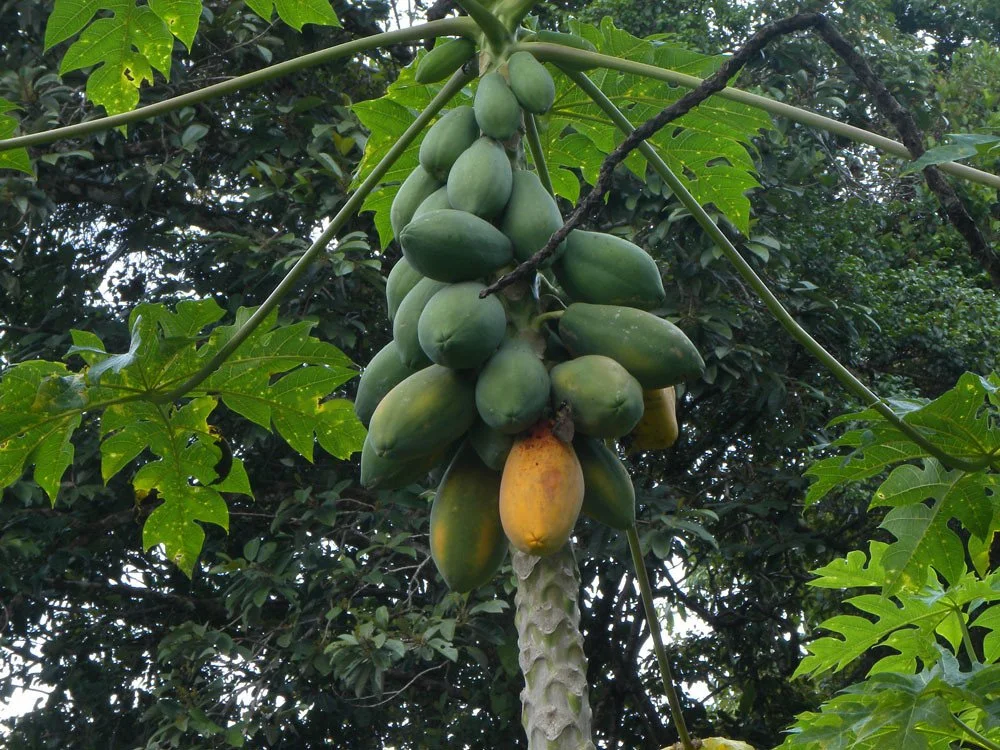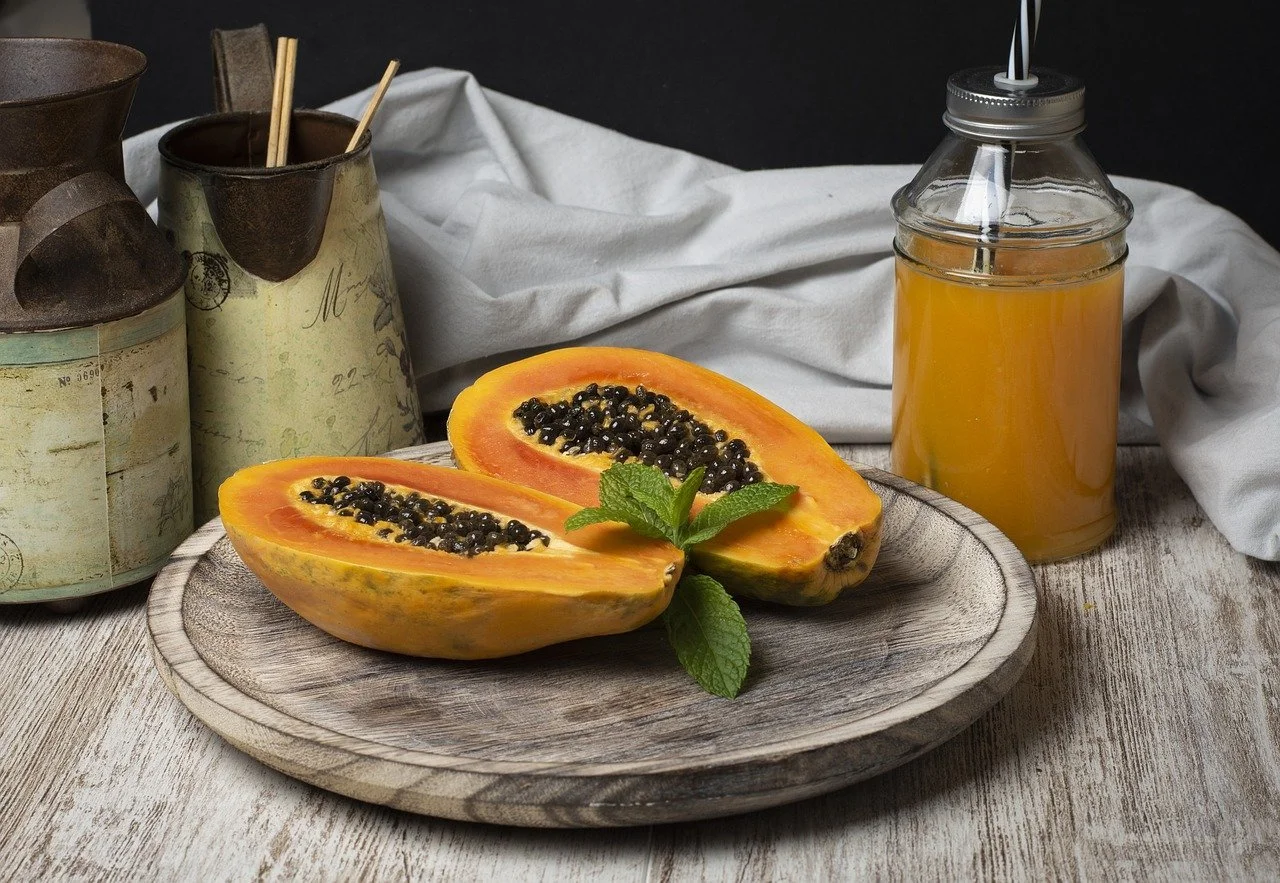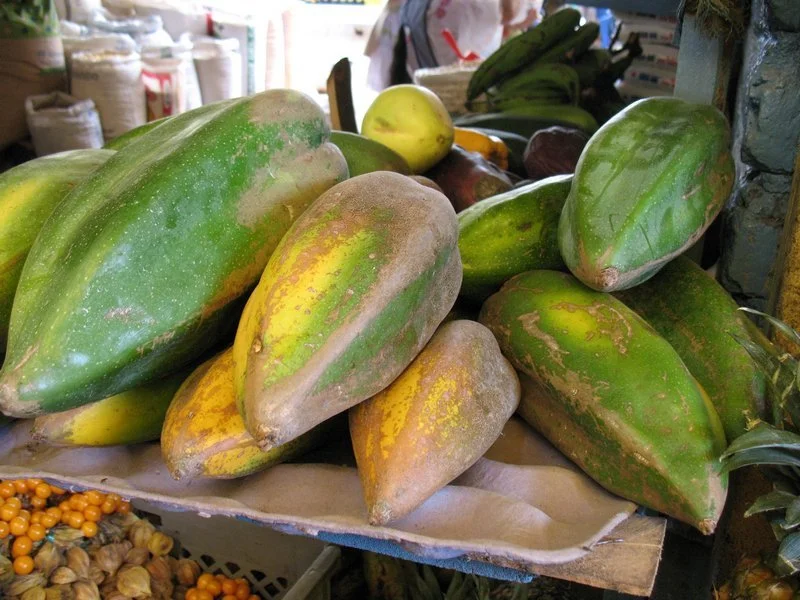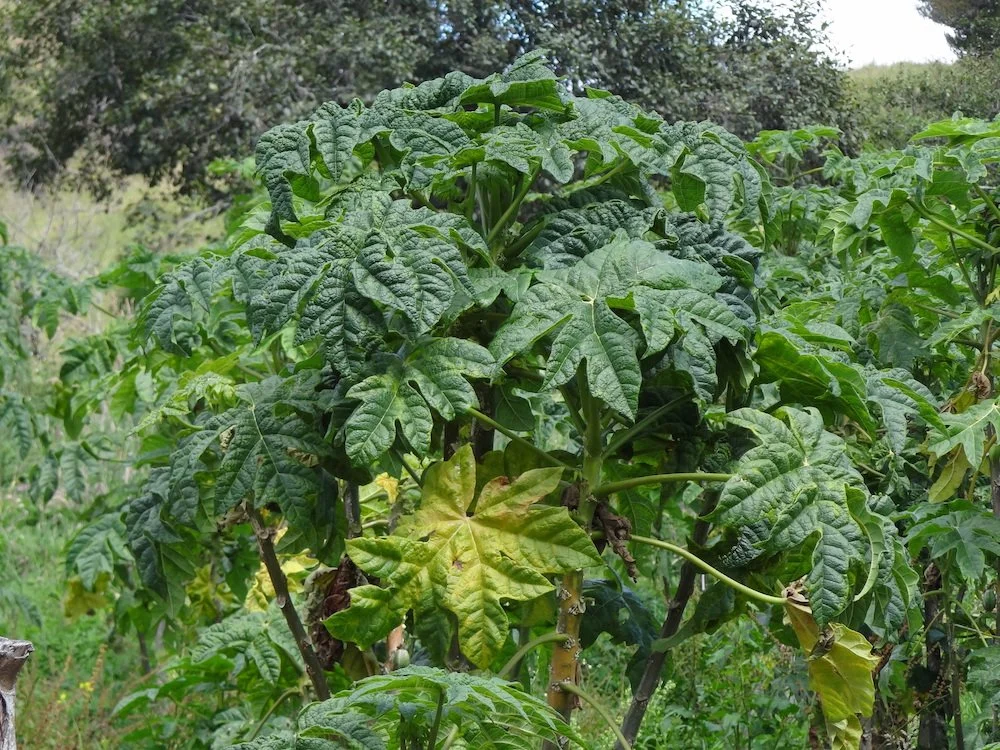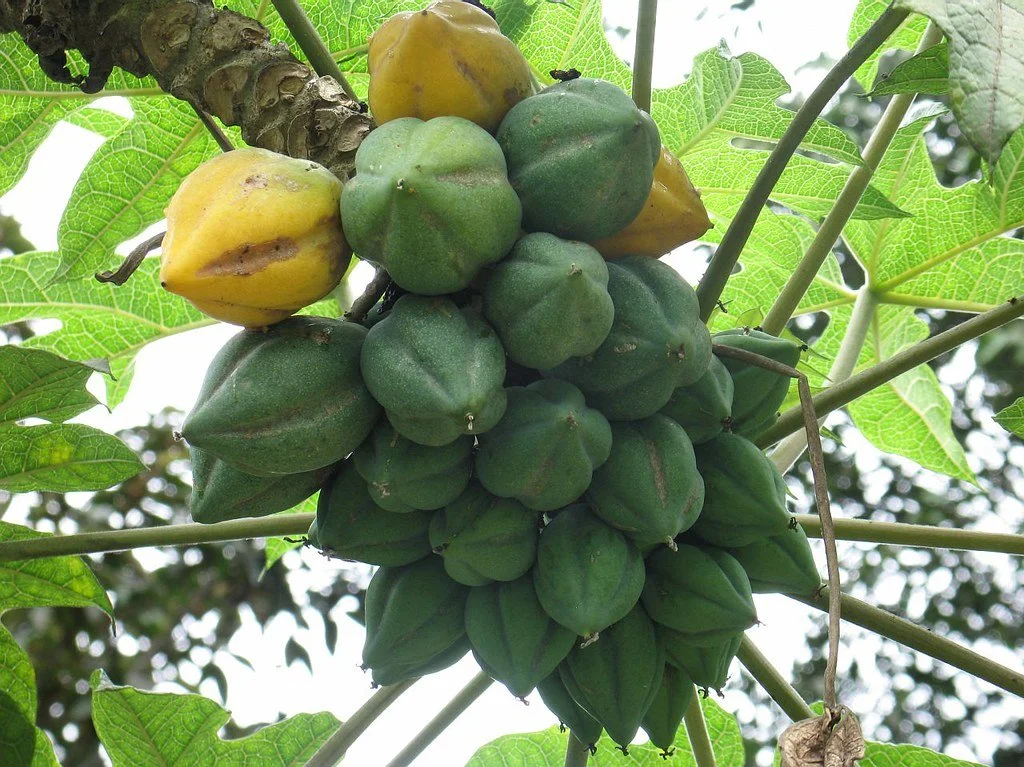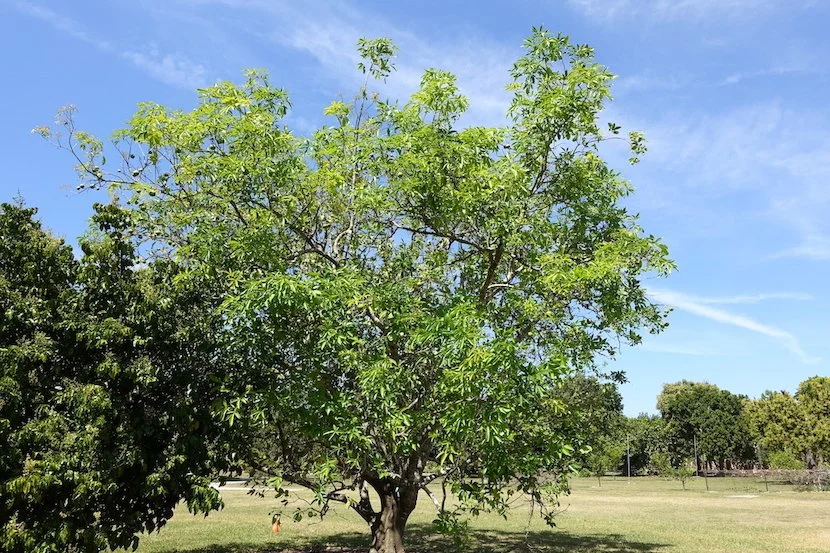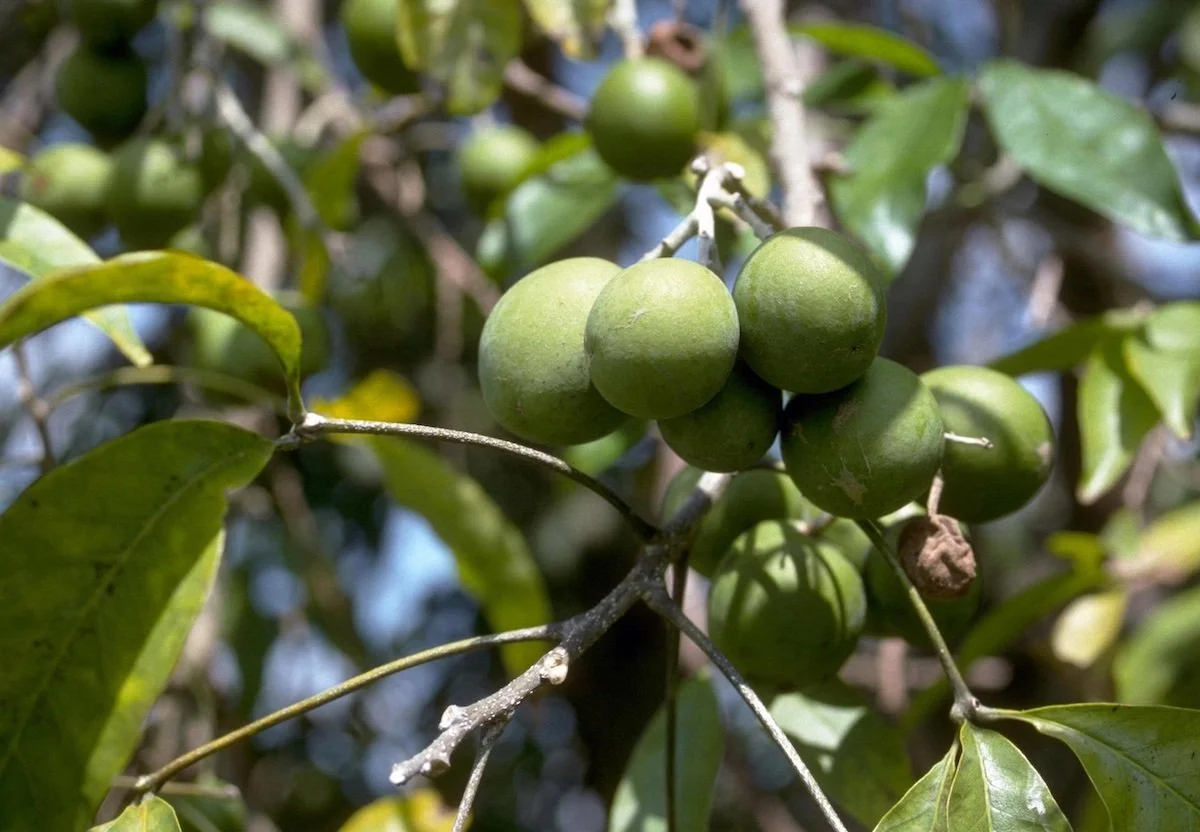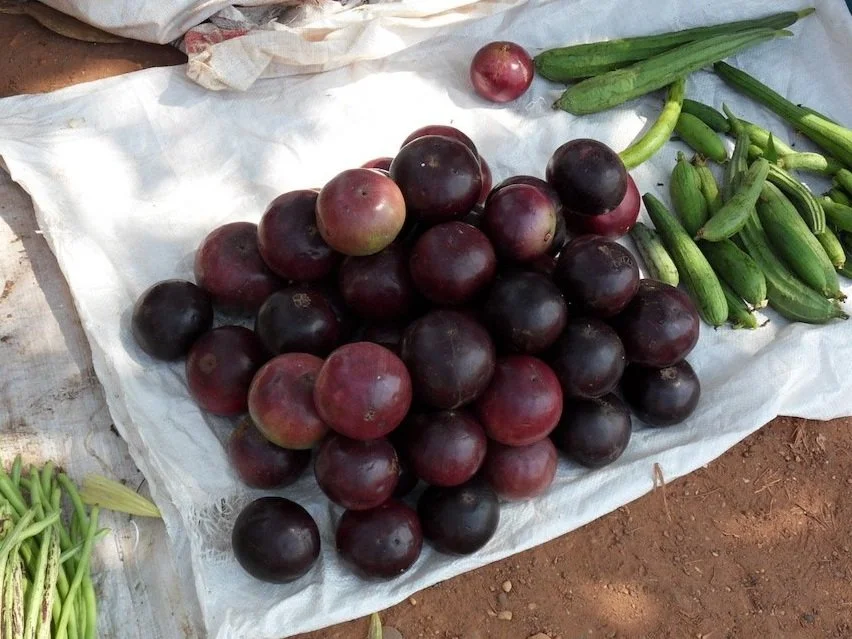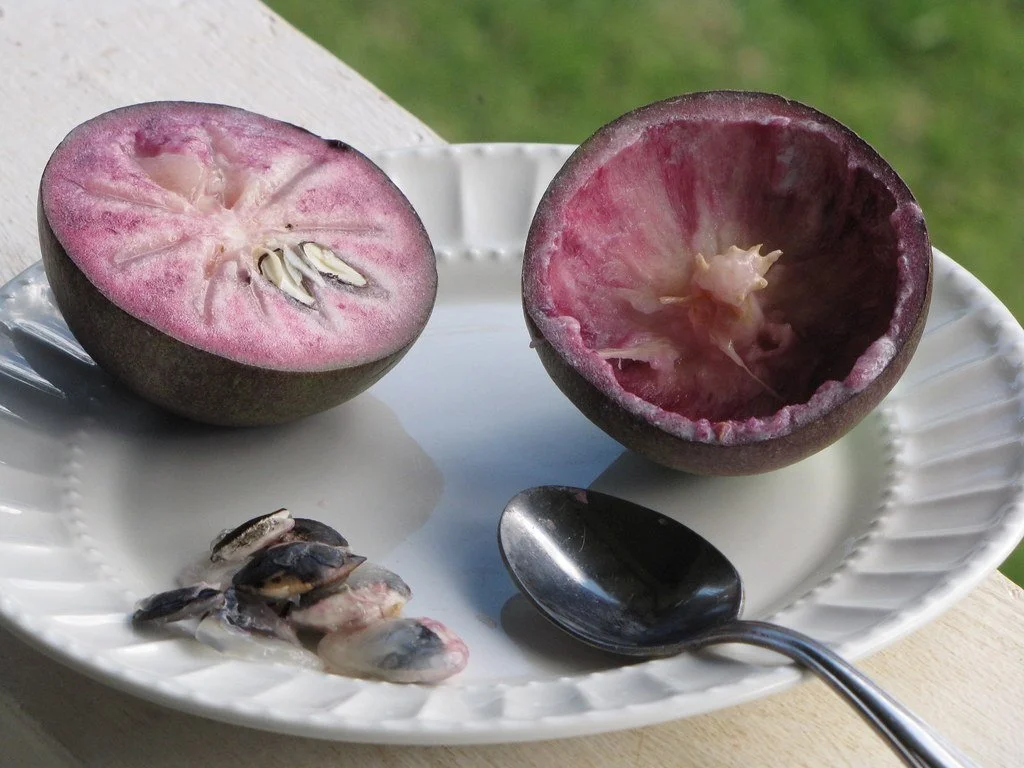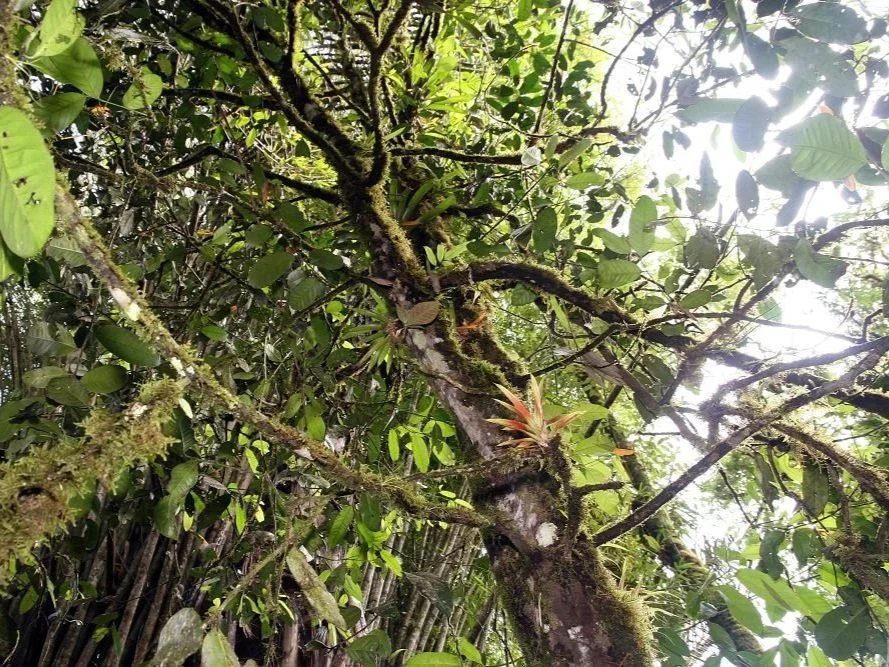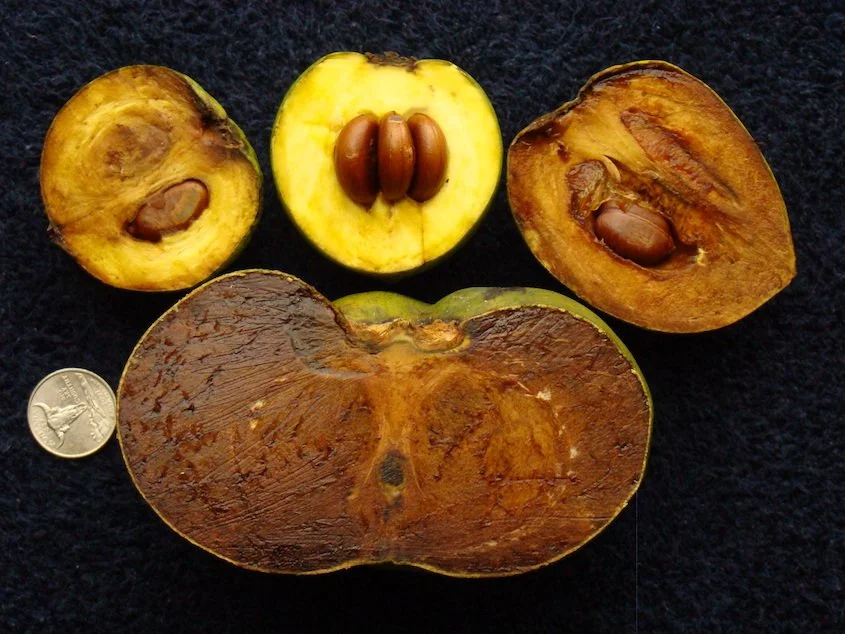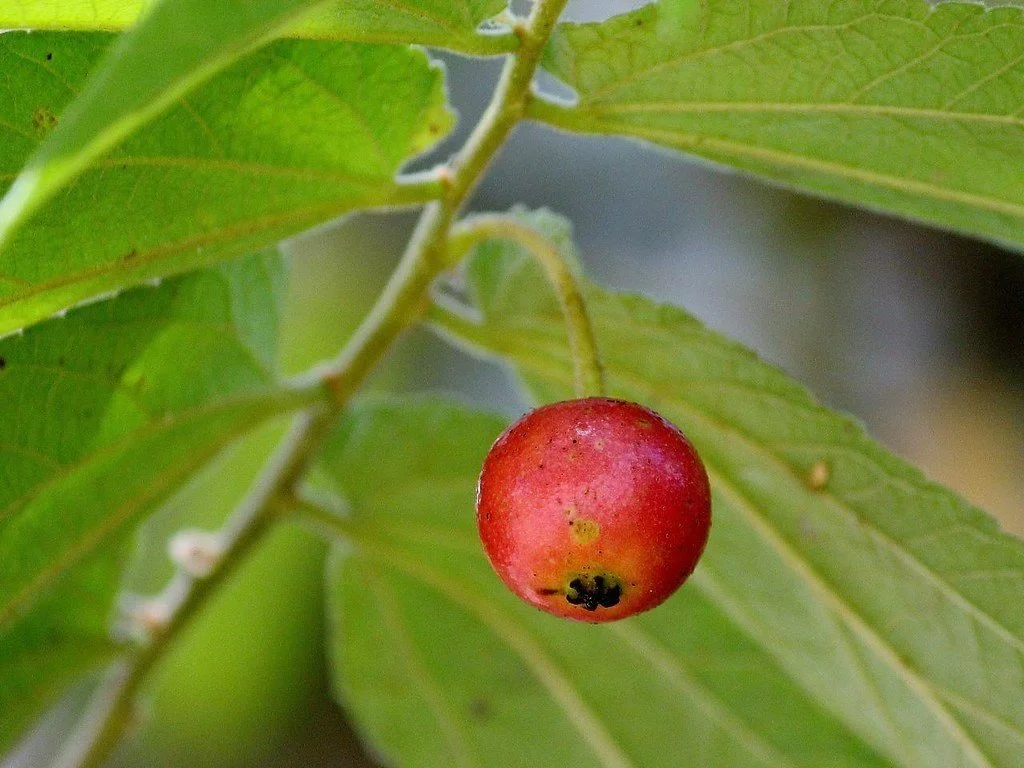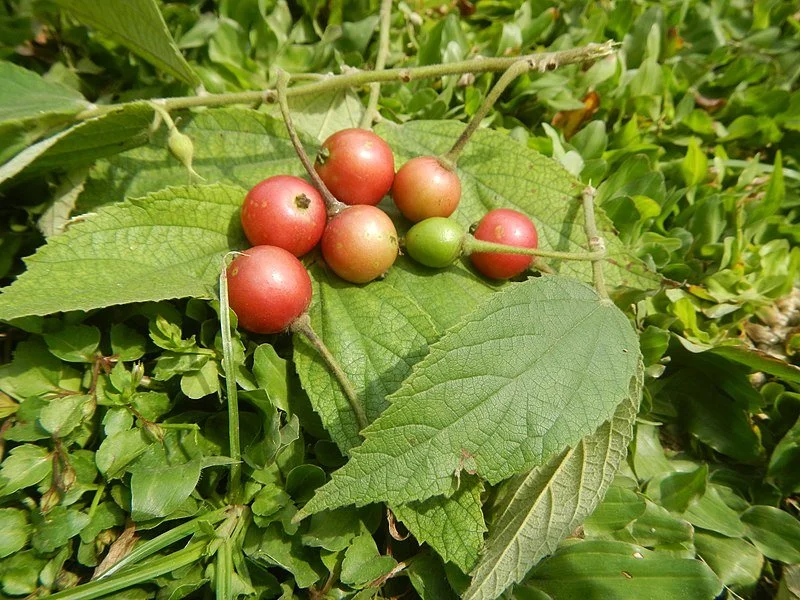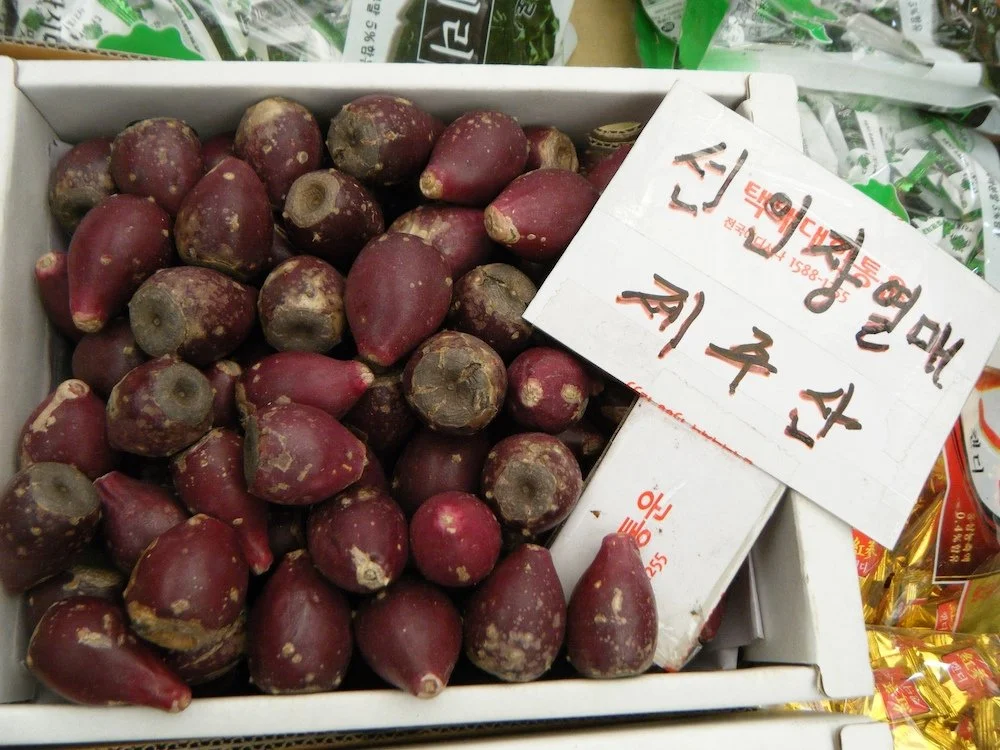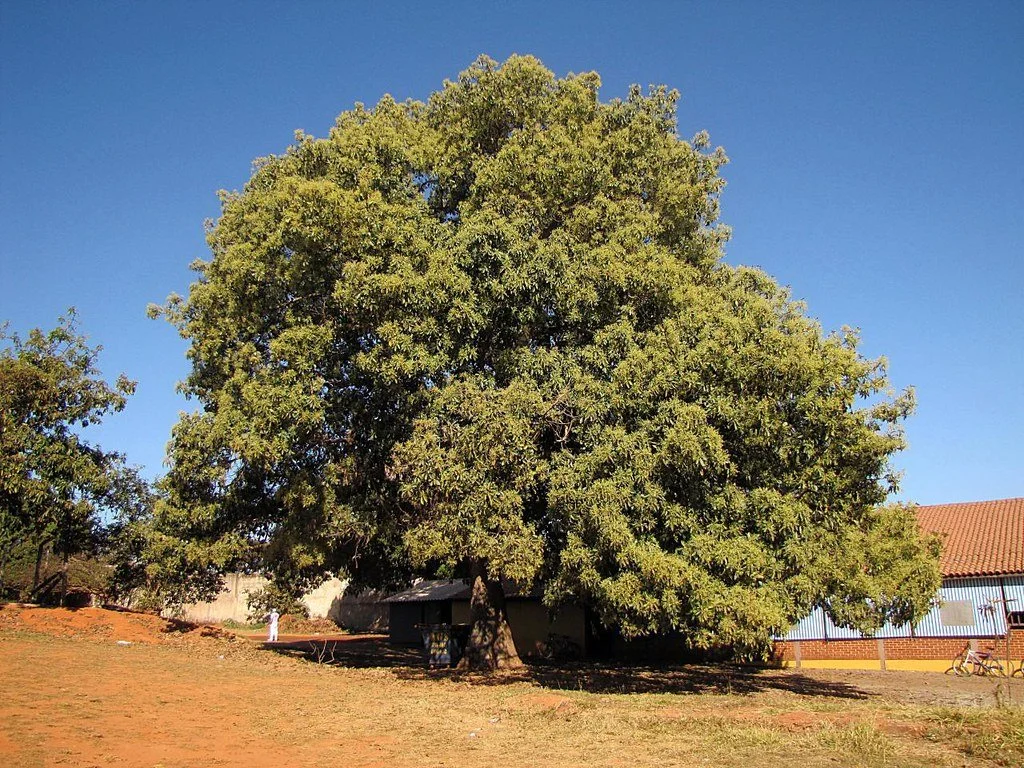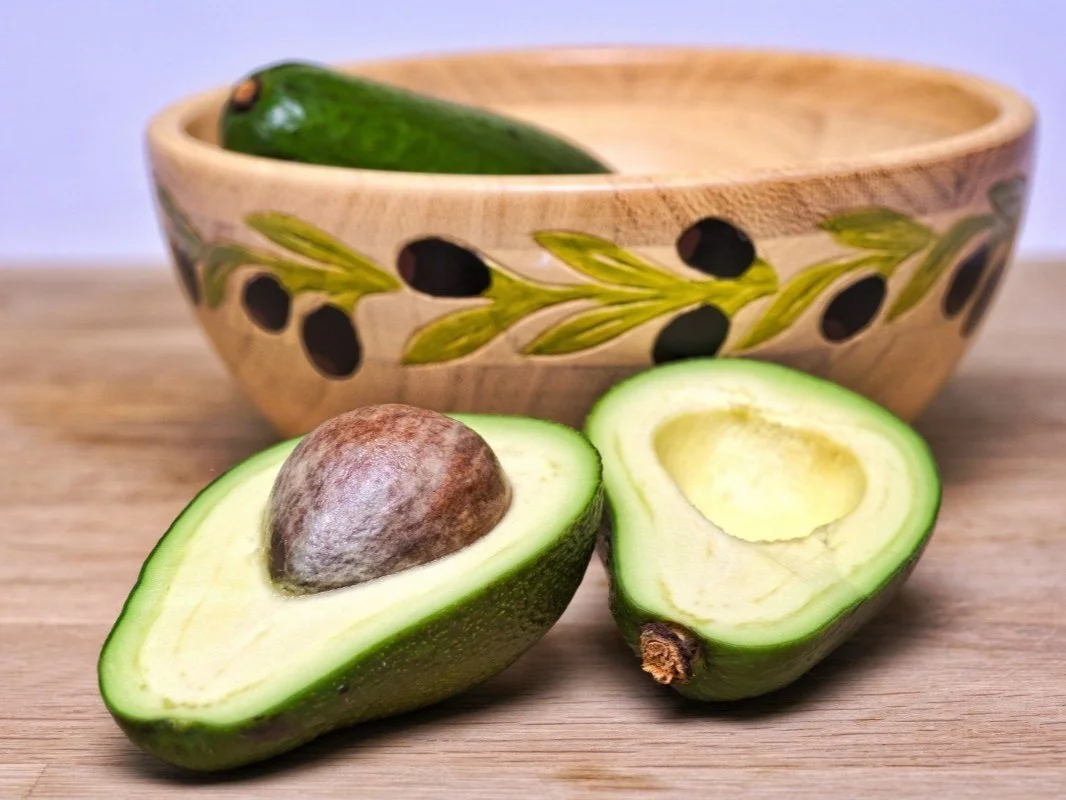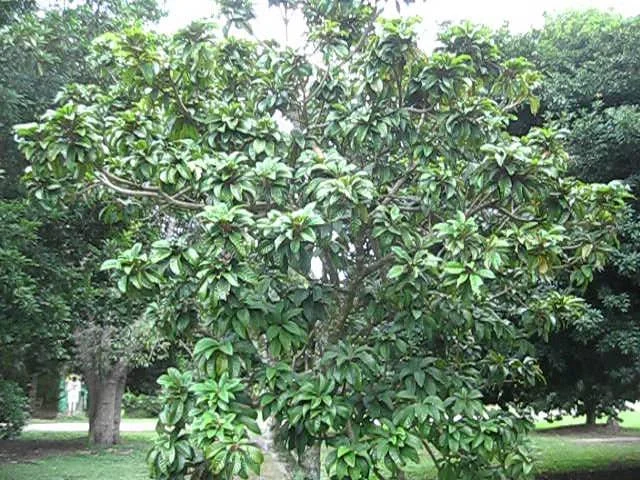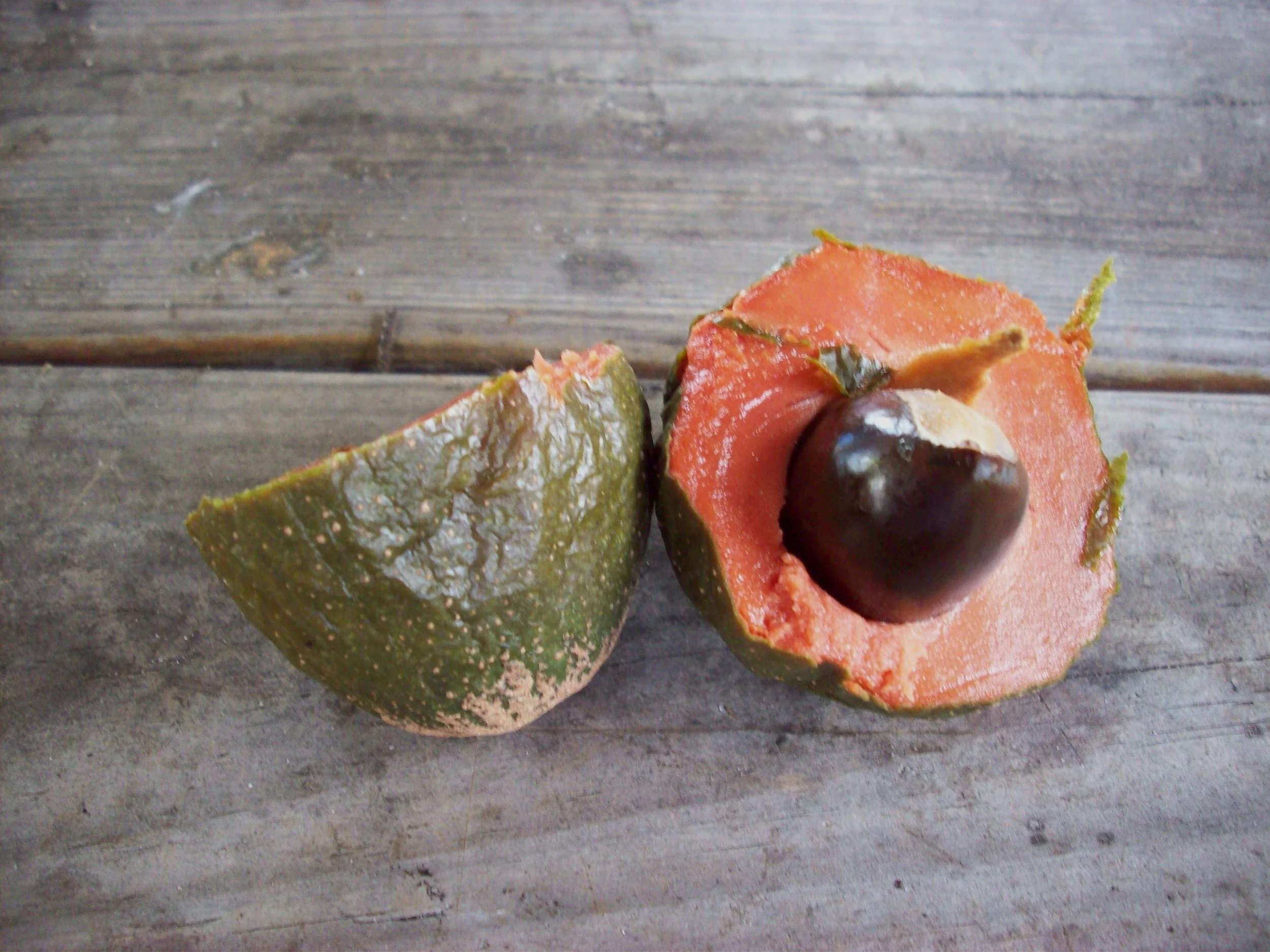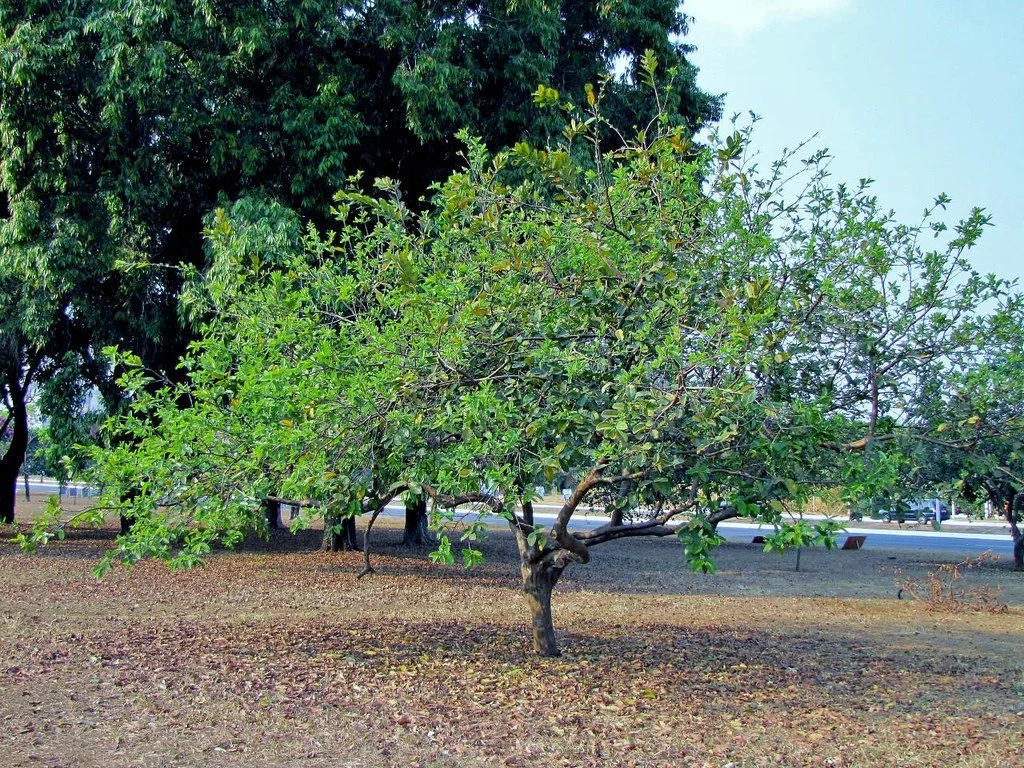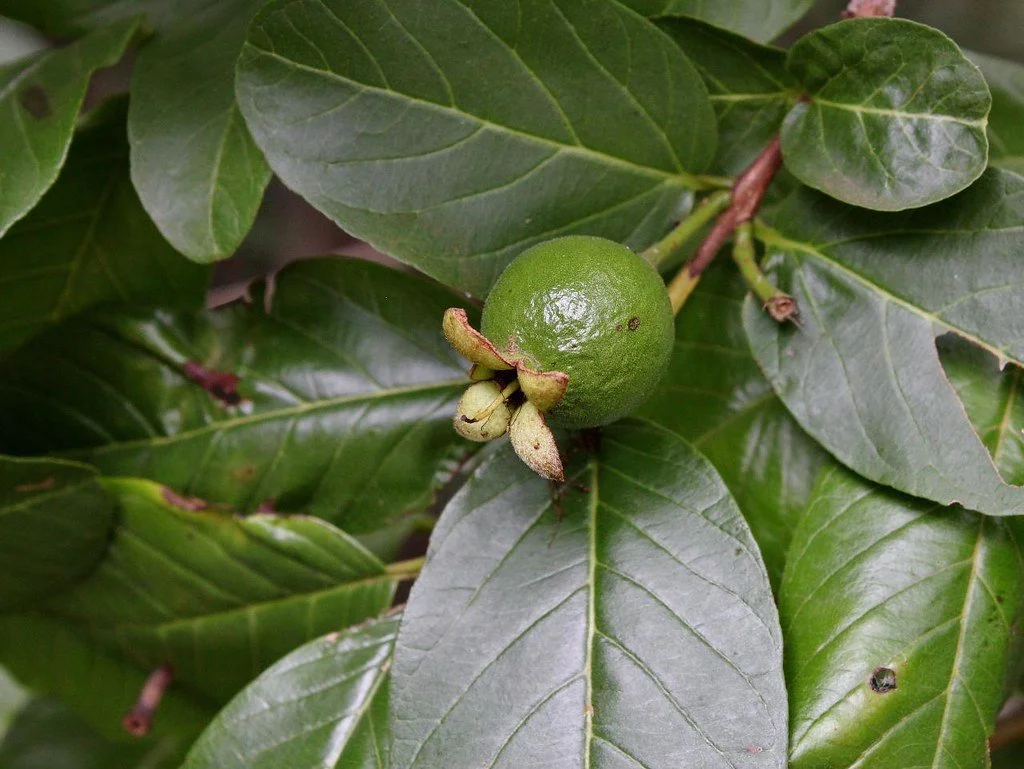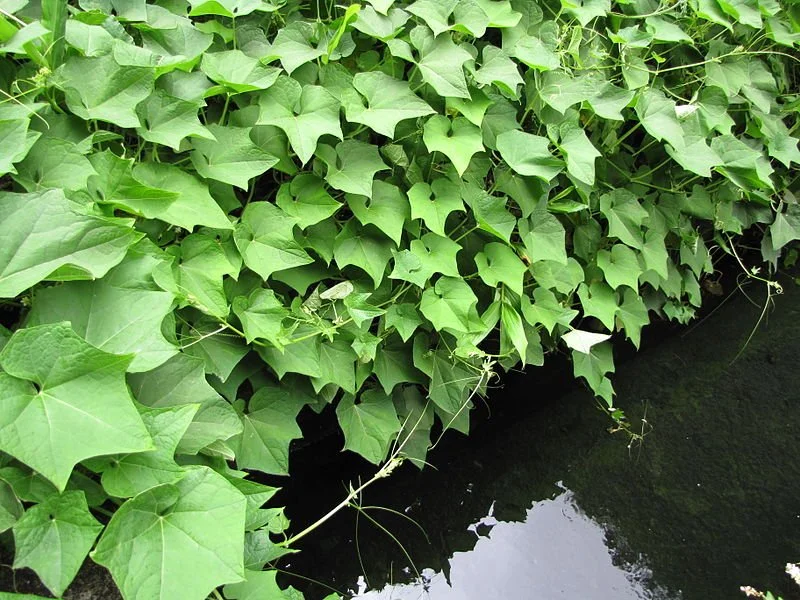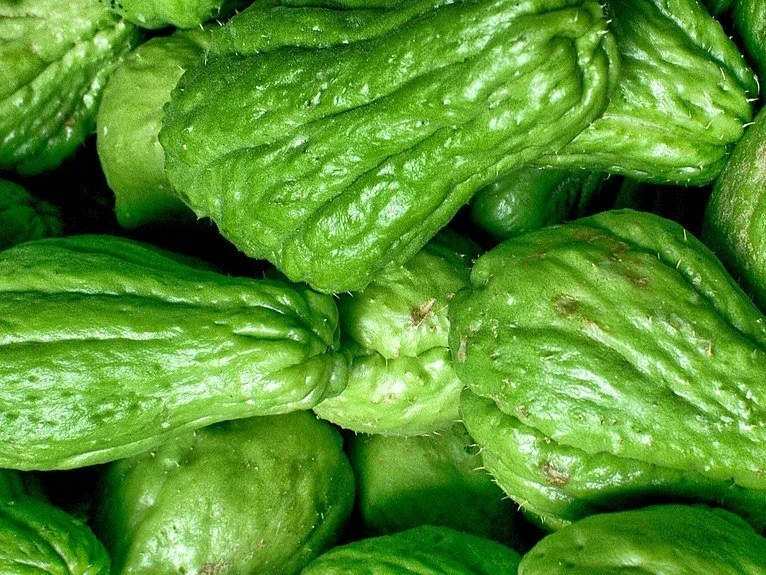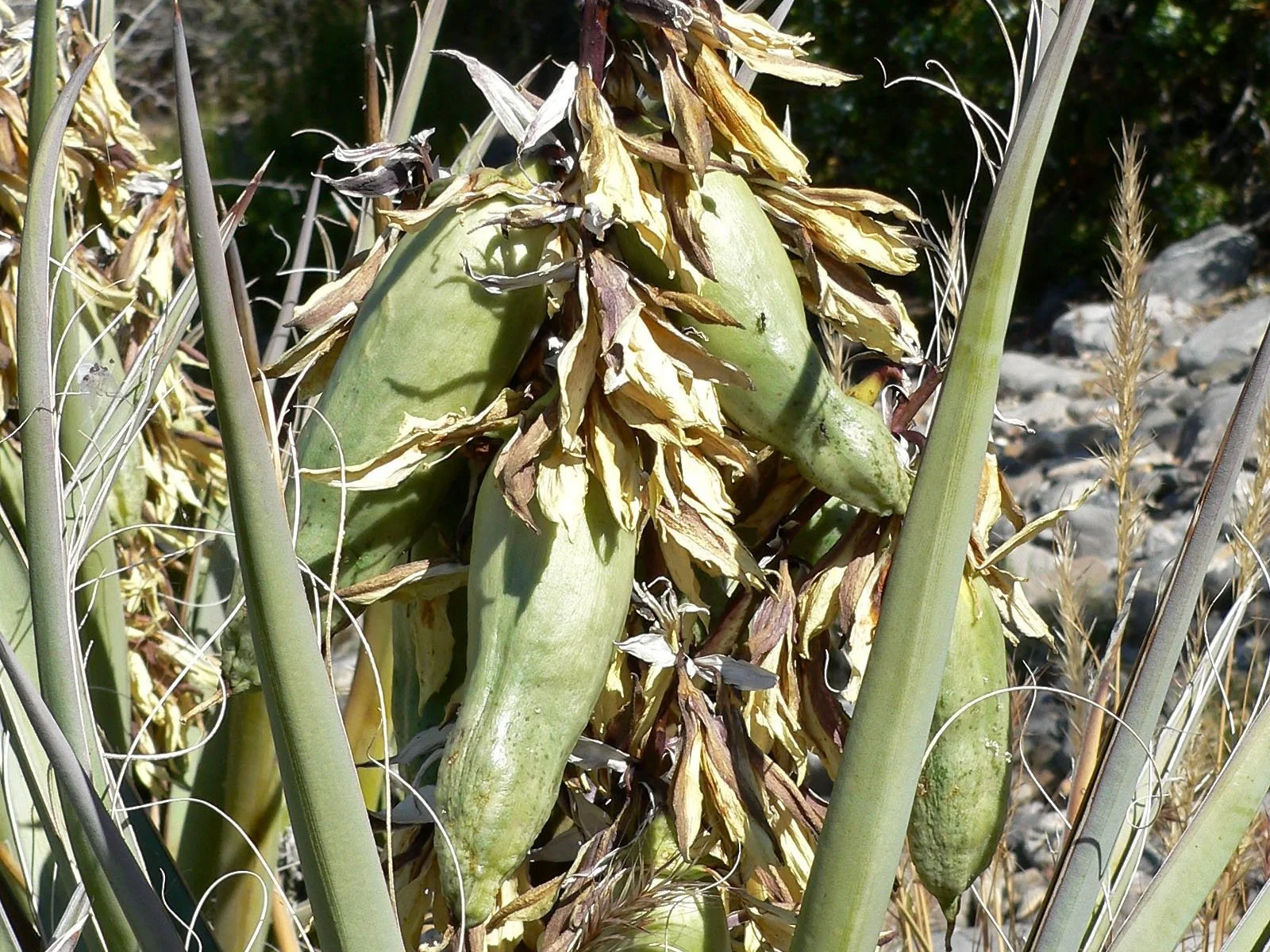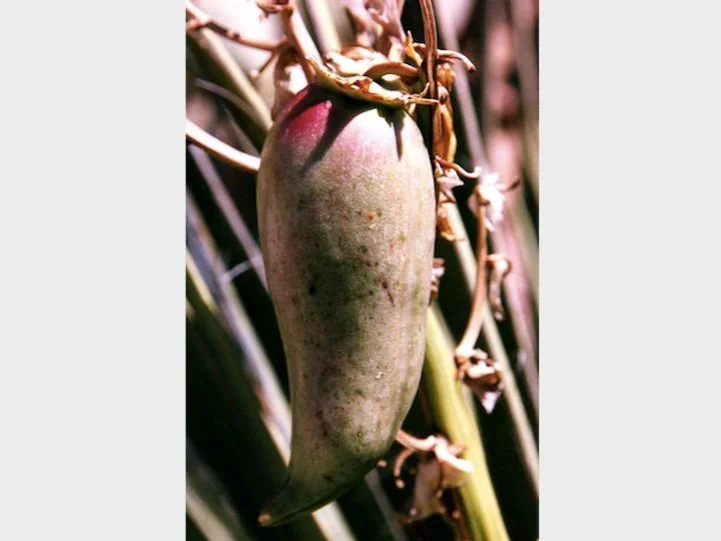Fruit trees from Central America
Join us on an amazing trip to the Central American ‘corner’ of the Orchard and explore the wonderful and diverse edible species to be found there. Learn about their names, varieties and edibility purposes.
If you wish to know more about each of the many many different species and varieties present at the Orchard of Flavours, feel free to dive into the complete database. Or even better, come for a visit and get to know us!
Carica papaya
Papaya, papayer, papaia, mamão
Edible parts:
Fruit is eaten raw or cooked. The vitamin-rich fruit has a firm, creamy texture and a delightful flavour reminiscent of melon and apricot. It can also be preserved, dried, cooked in pies, made into jam, ice cream, jellies, sherbets etc. The immature green fruit can be eaten as a vegetable. Seeds can be used as a spice, especially in salad dressings.
Varieties at the Orchard:
Alicia (dwarf variety), Intenza, Solo
Carica pentagona
Babaco
Edible parts:
The fruit differs from the related Carica papaya in being narrower, typically less than 10 cm in diameter. The babaco fruit is seedless and the smooth skin can be eaten, and is said to have tastes of strawberry, papaya, kiwi and pineapple. The fruit is pentagonal in shape, therefore giving it the scientific name of Carica pentagona.
Carica pubescens serena
Vasconcellea pubescens, mountain papaya, mountain paw paw
Edible parts:
The fruit pulp is edible, similar to papaya, and is usually cooked as a vegetable. It is also eaten raw.
Casimiroa edulis
White sapote, sapote blanche, pommier mexicain, Mexican apple
Edible parts:
Yellow in colour, the fruit is sweet, unctuous, soft. It can be savoured fresh, although it can also be used to prepare ice cream or sorbets. Its taste is reminiscent of anona or cherimola (Annona cherimola), with notes reminiscent of banana, coconut, peach or pear!
Chrysophyllum cainito
Purple star apple, cainito, star apple, pomme de lait
Edible parts:
A sweet flavour. The pleasantly acidic flesh is high in carbohydrate and is eaten fresh. The fruit is not good unless allowed to remain on the tree until fully ripe. When opening a star apple fruit, one should not allow any of the bitter latex of the skin to contact the edible flesh.
Diospyros digyna
Black sapote, chocolate pudding fruit
Edible parts:
Fruit is eaten raw or cooked. Bitter and astringent when unripe, it should not be eaten until it is fully ripe and soft. Soft, rich, dark chocolate brown in colour and somewhat sweet. Rather bland, the fruit is best mashed with a little orange, lemon or lime juice and chilled before serving. The immature fruit can be boiled and used as a vegetable.
Varieties at the Orchard:
Bernicker
Muntingia calabura
Panama berry, calabur, Jamaican cherry
Edible parts:
Fruit can be eaten raw or cooked. A sweet juicy flesh, they are very good to eat out of hand and can also be used in jams, tarts, pies etc. It has a light-brown, soft, juicy pulp, with a very sweet, musky, somewhat fig-like flavour, filled with exceedingly minute, yellowish seeds that are too fine to be noticed in eating. The fruit is intensely, almost nauseatingly, sweet.
Opuntia ficus indica
Prickly pear, figo da Índia, figuier d'Inde, figuier de Barbarie
Edible parts:
The fruits are eaten raw, and have one of the highest concentrations of vitamin C of any fruit. The “leaves” (or cladodes - technically stems) are cooked and eaten as a vegetable. They are sliced into strips, skinned or unskinned, and fried with eggs and jalapeños, served as a breakfast treat. They have a texture and flavor like string beans.
Opuntia humifusa
Eastern prickly pear, devil’s tongue
Edible parts:
The juicy and edible red or purple fruits measure from 3–5 cm (1 1⁄8–2 in). As the fruit matures, it changes colour from green to red, and often remains on the cactus until the following spring.
Persea americana
Avocado, avocatier, abacateiro
Edible parts / Varieties at the Orchard:
Bacon: Has medium-sized fruit with smooth, green skin with yellow-green, light-tasting flesh. When ripe, the skin remains green, but darkens slightly, and fruit yields to gentle pressure.
Fuerte: Fuerte avocados are medium-sized fruit with green skin, even as it ripens, and creamy yellow flesh. It is known to have medium-sized seed, for its easy peeling and its great taste. The creamy flesh of mild and rich flavor has 18% oil. The skin ripens green.
Hass: The large fruit has a small seed, and its green skin deepens in color as it ripens. The thick flesh has a smooth, creamy texture, pale green color, good flavor, and high oil content.
Reed: The Reed avocado is one of the largest known varieties of avocado. The round fruit is about the size of a softball, and can easily weigh more than a pound. Its thick, green, slightly pebbled skin is easy to peel, and its flesh is a pale golden-yellow. It has a relatively large seed and seed cavity, but its robust size allows it to still carry a substantial amount of edible flesh. The texture is buttery, and the flavor is bold, rich and nutty.
Zutano: Resembles the fuerte avocado with its pear shape and thin, glossy green skin, which remains green even when ripe, however its flesh is not as creamy or as rich in flavor. It has low oil but high water content, resulting in a slightly watery flavor, and has pale green flesh with a fibrous texture. Its mild flavor and problematic peeling makes it less desirable than other avocado varieties.
Pouteria viridis
Green sapote
Picture coming soon
Edible parts:
The fruit is eaten raw or used to make preserves. The reddish-brown pulp is melting, sweet and somewhat juicy. The flavour is somewhat similar to the sapote (P. sapota) but is more delicate and the flesh is finer and smoother in texture. The flesh is sweet and juicy. The seeds are edible, as well, and can be served roasted. The latex of the tree can be made into chewing gum.
Psidium guajava
Guava, goiaba, goyavier
Edible parts:
The fruit can be eaten raw or even cooked. Fruits are sliced and used as salads or desserts. Beverages are also prepared from the pulp of the fruit. Many varieties of delicacies such as jam, guava paste, guava cheese are produced from the fruit. The leaves are also edible and have medicinal properties. The fruit is rich in vitamin A and vitamin C.
Red guavas can be used as the base of salted products such as sauces, substituting for tomatoes, especially to minimize the acidity. A drink may be made from an infusion of guava fruits and leaves, which in Brazil is called chá-de-goiabeira, i.e., "tea" of guava tree leaves, considered medicinal.
Varieties at the Orchard:
Purple, Thai Giant
Saurauia madrensis
Moquillo
Picture coming soon
Edible parts:
It is a relative of kiwi fruit (Actinidia deliciosa) and, like the kiwi, needs both a male and a female plant to set fruit. The fruits are small, greenish berries, which are very sweet in taste. The pulp is mucilaginous, sticky, and filled with many small seeds. The fruit is pretty much unknown outside of its native area in Mexico. Local people in Chiapas collect the fruits to eat and also sell them along with other fruits at local markets.
Sechium edule
Chayote, chuchu, chouchou, choko
Edible parts:
The fruit whether raw or cooked is a good source of vitamin C. Although most people are familiar only with the fruit as being edible, the root, stem, seeds and leaves are edible as well.
Yucca baccata
Datil yucca, banana yucca, Spanish bayonet, broadleaf yucca
Edible parts:
The indehiscent fleshy fruit is 8–18 cm long and 6 cm across, cylindrical, and tastes similar to sweet potato. The young flower stalks can be cooked and eaten, with the tough outer rind discarded. The fruit can be eaten raw or cooked.


